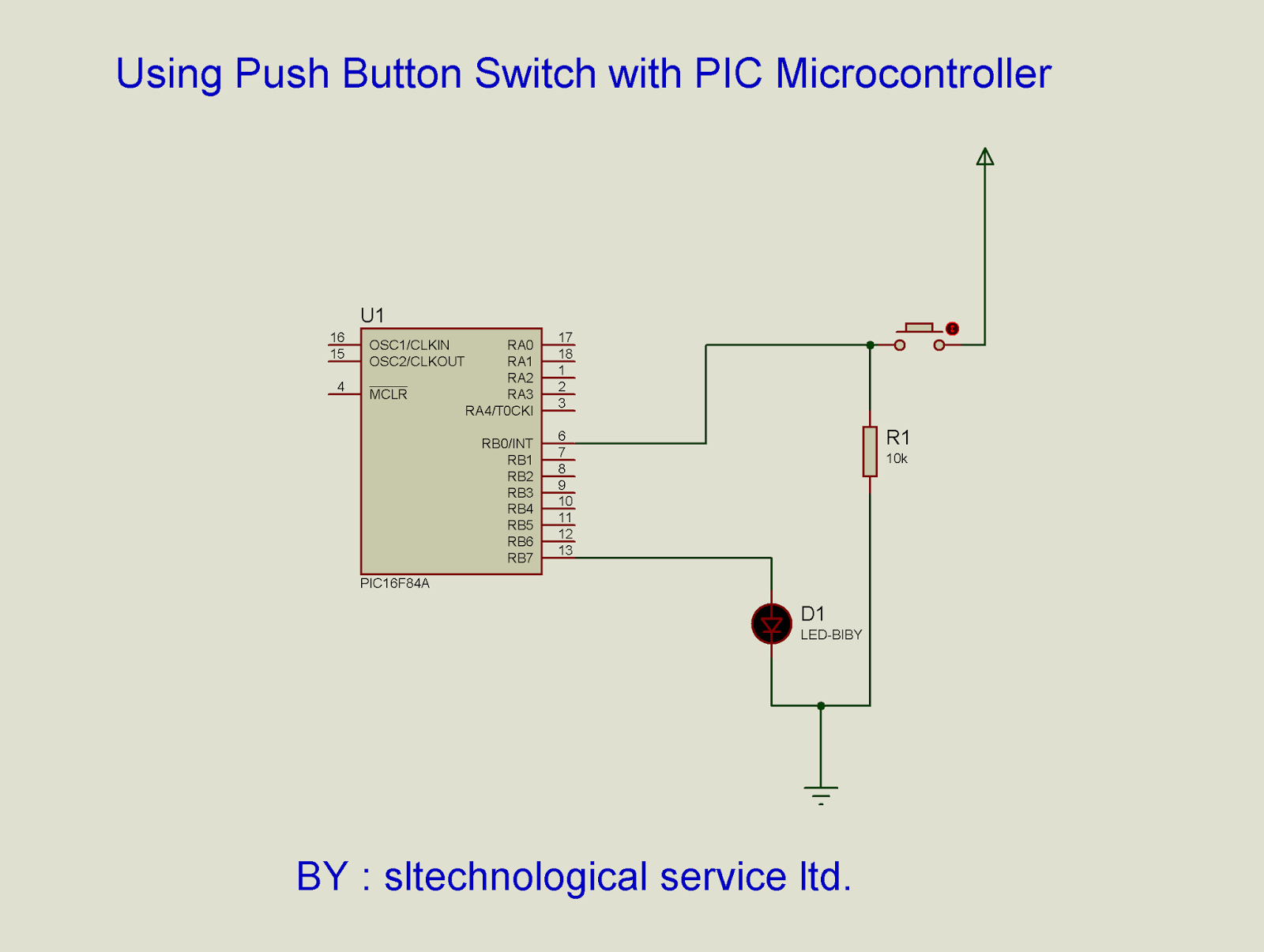Decoding the Push Switch Symbol in Circuit Diagrams
Ever looked at a circuit diagram and felt a little lost? Those squiggly lines and cryptic symbols can seem like a secret language. One common symbol you'll encounter is the push switch, a critical component in many everyday electronics. Understanding this symbol is key to interpreting circuit diagrams and designing your own circuits.
The push switch circuit symbol represents a momentarily closed switch activated by pressing a button. Unlike a toggle switch, which maintains its state after being actuated, a push switch only completes the circuit while the button is held down. Think of a doorbell – the circuit is only active while you're pressing the button.
From simple doorbells to complex control panels, push switches are everywhere. They provide a simple and intuitive way to control the flow of electricity in a circuit. The standardized symbol for a push switch allows anyone familiar with electronics to instantly recognize its function in a diagram, regardless of language or background.
The earliest forms of switches were simple mechanical devices, evolving alongside the development of electricity itself. As circuit diagrams became more complex, the need for standardized symbols emerged. The push switch symbol, with its easily recognizable depiction of a momentary connection, became a crucial element in this visual language of electronics.
One common issue with push switches is contact bounce. This phenomenon occurs when the metal contacts of the switch bounce against each other during actuation, creating multiple on/off cycles in a very short time. This can lead to unintended behavior in digital circuits and requires special debouncing techniques to mitigate.
The push switch symbol typically consists of two terminals connected by a line that is momentarily bridged by a separate line representing the button actuator. Variations of the symbol exist to indicate normally open (NO) or normally closed (NC) configurations. NO switches close the circuit when pressed, while NC switches open the circuit when pressed. For example, a doorbell uses a NO push switch.
Benefits of using push switches include their simplicity, ease of use, and low cost. They are ideal for applications requiring momentary activation, such as doorbells, reset buttons, and start/stop controls. For instance, a computer's power button is often a momentary push switch, triggering the startup process.
To integrate a push switch into a circuit, identify the points you want to control and connect the switch in series with the load. Ensure proper polarity for polarized components. For example, connecting a push switch in series with an LED and a battery allows you to control the LED's illumination by pressing the button.
If your push switch is malfunctioning, first check for physical damage or loose connections. Use a multimeter to test continuity across the switch terminals. If the switch doesn't close the circuit when pressed or exhibits erratic behavior, it likely needs replacement.
Advantages and Disadvantages of Push Switches
| Advantages | Disadvantages |
|---|---|
| Simple and easy to use | Susceptible to contact bounce |
| Low cost | Not ideal for sustained activation |
| Versatile applications | Limited lifespan compared to other switch types |
Best practices for using push switches include using appropriate debouncing techniques for digital circuits, choosing the correct switch type (NO or NC) for the application, ensuring proper wiring and connections, and selecting switches rated for the intended voltage and current.
Real-world examples include doorbells, computer power buttons, remote control buttons, industrial control panels, and arcade game buttons. Each application leverages the momentary action of the push switch for specific control functions.
Common challenges with push switches include contact bounce, mechanical wear, and environmental factors like dust and moisture. Solutions include debouncing circuits, using sealed switches, and implementing regular maintenance.
FAQs:
1. What is the difference between a push switch and a toggle switch? A push switch provides momentary contact, while a toggle switch maintains its state.
2. How can I prevent contact bounce? Debouncing circuits or software techniques can mitigate contact bounce.
3. What are the different types of push switches? Common types include NO (normally open) and NC (normally closed) switches.
4. How do I test a push switch? Use a multimeter to check for continuity.
5. What are the applications of push switches? They are used in doorbells, power buttons, remote controls, and industrial control panels.
6. How long do push switches last? The lifespan depends on usage and quality, but can range from thousands to millions of cycles.
7. How do I choose the right push switch for my project? Consider factors like voltage, current rating, and mounting style.
8. What is the symbol for a normally closed push switch? The NC push switch symbol usually features a break in the line connecting the terminals, indicating that the circuit is open until the button is pressed.
Tips and tricks for working with push switches include using a breadboard for prototyping, carefully inspecting datasheets for specifications, and using appropriate tools for soldering and wiring.
In conclusion, the push switch circuit symbol is a fundamental element in the language of electronics. Understanding its meaning, variations, and practical applications empowers anyone working with circuits, from hobbyists to professionals. By recognizing the symbol, understanding its function, and applying best practices, you can effectively utilize push switches in your projects and troubleshoot common issues. The simplicity and versatility of the push switch make it an indispensable component in countless electronic devices we interact with daily. Take the time to familiarize yourself with this essential symbol and unlock a deeper understanding of the circuits around you. This knowledge will empower you to design, build, and troubleshoot electronic systems with confidence, opening doors to a world of possibilities in the exciting field of electronics.
The allure of the mark famous actors with moles
Brenda alexander muck rack profile navigating the media landscape
Faith over fear graphic hoodies a bold statement of belief















